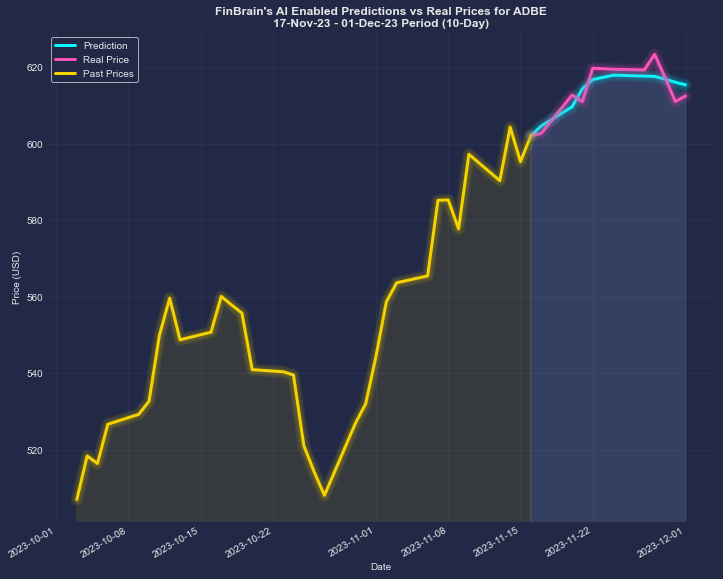20 Free Suggestions For Deciding On AI Stock Analysing Websites
20 Free Suggestions For Deciding On AI Stock Analysing Websites
Blog Article
Top 10 Tips For Evaluating The Customer Support Of Ai Platforms For Stock Prediction/Analyzing Trading
Support for customers is an essential aspect when selecting an AI trading platform for predicting or analyzing stocks. Support that is reliable and prompt will make a huge difference in solving issues, increasing platform usage, and ensuring an enjoyable trading experience. These are the top 10 suggestions on how to evaluate the support provided by these platforms.
1. Review Support Availability
24/7 support: Verify if your platform offers support around-the clock, which is important to ensure real-time trading and access to global markets.
Business hours If you do not have 24/7 support, be sure that support is available for you during business hours.
Holiday coverage: Check to see if you can receive assistance during holidays, weekends and even market closures.
2. Test Response Times
Initial response. Contact customer support and ask a sample question to see how quickly they respond.
Think about the time it will take to find solutions instead of just recognizing them.
Live chats: If it is available, check the responsiveness and efficiency.
3. Assess the Support Channels
Support via multiple channels: Ensure that the platform provides support via different channels (e.g. email, phone call live chat, email, or social media).
Check the availability and reliability of the support channels you prefer (e.g. chat, phone).
Self-service solutions: Look for a comprehensive information base, FAQs or forums on community for fast solving problems.
4. Evaluate the Support Quality
Experience: Ensure that support agents have thorough understanding of the platform trading, technical and other issues.
Check your support agent's abilities to resolve complex issues and escalate them appropriately.
Professionalism. Check that support interactions were courteous, professional, and efficient.
5. Find Dedicated Client Managers
Premium support: Check whether you have account managers for users with higher levels or institutions.
Personalized assistance: Assess whether account managers offer tailored support and proactive guidance.
Relationship building - Check that account managers are in touch and establish long-term relationships with users.
Check the supporting documentation
Knowledge base: Make sure the platform has a well-organized and searchable knowledge bases with tutorials, guides, and troubleshooting tips.
Take a look at the video tutorials on the platform and webinars to find out whether they are accessible to visually impaired learners.
API documentation: Check if you're a developer to determine if there exists a clear and detailed API document.
7. Examine the Community Support and Peer Support
User forums: See whether the platform has a community or forum for users to share their tips and thoughts.
Social media groups - Look for unofficial Facebook, LinkedIn, Reddit and other social media websites where users discuss the platforms.
Community engagement: Ensure that the platform team is actively participating in the forums and discussions of the community.
8. Evaluate Escalation Processes
Issue escalate. Make sure you have a clear process for escalating unresolved issues up the support chain or even management.
Follow-up: Verify that support has followed up on a problem once it was resolved to confirm that the issue was fully completed.
Feedback loop: Ensure that the platform is collecting feedback from users to help improve its support services.
9. Test Support for critical situations
Market volatility: Assess the responsiveness of staff members during times of extreme market volatility.
Technical problems: Simulate a technical issue (e.g., login problem or data discrepancy) to see the way support tackles it.
Trade execution: Determine whether the support staff can help with urgent issues in trade (e.g. delayed execution, failed orders).
Review User Feedback to find Support
Online reviews: Look up the reviews of customers on platforms such as copyright or G2 to gauge for the overall satisfaction level with the customer service.
Search for testimonials and case studies that highlight positive experiences.
Go to the platform and see how they handle complaints or negative feedback, as well as support.
Bonus Tips
Support during the free trial or demo.
Support in other languages: If you are not an English speaker, check if there is any support available.
Training and Onboarding: Find out if the platform provides training sessions or onboarding to help new users getting started.
Check these points to determine the level of customer service offered by AI stock trading platforms. Choose a platform offering prompt, efficient and prompt help. Strong customer support will enhance your experience, and you will benefit from all options. Check out the most popular copyright ai bot for more advice including chart ai for trading, investment ai, best ai copyright, using ai to trade stocks, trading ai, best ai stocks to invest in, best ai copyright trading bot, ai bots for trading, best ai copyright trading bot, ai trading bots and more.
Top 10 Tips On Assessing The Speed And Latency Of Ai Stock Predicting/Analyzing Trading Platforms
When looking at AI trading platforms that forecast or analyze the price of stocks the speed and latency of processing are crucial factors, especially for algorithmic traders and high-frequency traders. Milliseconds of delay could negatively impact profitability and trade execution. These are the top 10 guidelines for assessing the speed and latency of these platforms:
1. Real-time Data Feeds to evaluate
Speed of data delivery: Make sure the platform is able to deliver real-time information with minimal delay (e.g. less than a millisecond delay).
The data source's proximity Determine if the platform's servers are located near to major exchanges in order to cut down on time to transmit data.
Data compression: Check for efficient methods of data compression that speed up the delivery of data.
2. Test Trade Execution Time
Processing time for orders: This is the duration it takes for the platform to process and complete trades after you have placed an order.
Direct Market Access (DMA) Check to see if the platform supports DMA. This allows orders to be sent directly to the exchange without the necessity for intermediaries.
Look for more detailed reporting on execution that includes timestamps as well as confirmations of the order.
3. Assess Platform Responsiveness
User interface (UI speed) Find out how fast the system responds to inputs, for example, clicking buttons or loading charts.
Chart updates Check to see if the charts and visuals are updated in real time without delay.
Mobile app performance When you're using a mobile app, ensure it performs just as fast as a desktop version.
4. Find low-latency infrastructure
Server Locations: Use servers with low-latency that are close to major financial centers or exchanges.
Co-location service: See whether the exchange offers colocation services that allow the hosting of your trading algorithm on servers near to the exchange.
High-speed network: Verify whether the platform is using high-speed fibre-optic networks or any other low latency technology.
5. Assessing the speed of simulation and backtesting
Find out how quickly the platform analyzes and processes the historical data.
Simulation latency: Make sure that the platform is able to simulate trading in real-time without noticeable delay.
Parallel processing: Determine if the platform uses parallel processing or distributed computing to speed up complicated calculations.
6. Measure API Latency
API response time: determining how quickly the platform's API responds (e.g. fetching market data or placing orders).
Rate limits: Check if API has reasonable rates limits to prevent delays during high-frequency trades.
WebSockets support: Verify that the platform utilizes WebSockets protocols for low-latency real-time streaming of data.
7. Test Platform Stability using Load
High-volume Trading: Simulate large quantities of trading scenarios in order to see if the platform is responsive and stable.
Market volatility: Test the platform during times of extreme market volatility to ensure it can handle rapid price changes.
Test for stress: Check if your platform provides tools for stress-testing strategies under extreme circumstances.
8. Examine Connectivity and Network
Internet speed needs. Check that your internet connection meets recommended speeds for the platform to guarantee optimal performance.
Check for redundant connections.
VPN latency. Verify if you are using a VPN to determine if it causes latency.
9. Look for Speed Enhancement Features
Pre-trade Analyses: Check that the platform has pre-trade analysis to improve execution speed and order processing.
Smart Order Routing (SOR). Verify that the platform is using SOR to identify the fastest and most efficient execution sites.
Monitoring latency: Check whether your platform is equipped with tools that let you examine and monitor latency in real-time.
Benchmarks for User Feedback Review
User reviews: Check for user feedback on the platform to gain an understanding of its speed and speed.
Benchmarks by third-parties: Check for independent benchmarks and reviews that compare the platform's performance to those of its competitors.
Case studies: Find out if the platform provides case studies or testimonials highlighting its low-latency capabilities.
Bonus Tips
Trial time: You can make use of a demo or trial period to evaluate the performance of the platform and its latency.
Customer Support: Check whether the platform provides assistance with issues related to latency, or for optimization.
Hardware needs. Find out the platform needs specialized hardware (e.g. a high-performance computer) to function at optimum speed.
These tips will aid in assessing the performance of AI trading platforms that predict/analyze price fluctuations in stocks. You can select a platform for trading which best suits the requirements of your trading and eliminates delay. The ability to operate with low latency, especially in high frequency and algorithmic trading, is vital. Even the smallest delays can greatly impact profits. View the most popular her response on stock predictor for more info including best ai stocks to invest in, ai stock trading app, ai for trading, ai stock trading bot free, ai trader, ai investing, ai stock trading bot free, ai investment platform, free ai trading bot, ai for stock trading and more.